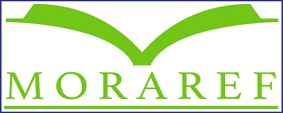The ANALYSIS OF WORKING POSTURE ON ANCHORY DRYER WORKERS IN BELAWAN PORT USING RULA METHOD
DOI:
https://doi.org/10.31004/prepotif.v6i2.4178Keywords:
ergonomic, rula, reba, work postureAbstract
Introduction: Fish lifting workers require an ergonomic attitude at work. If the work posture is not ergonomic, it can cause disorders of the musculoskeletal system. The purpose of this study was to determine the posture of workers in fish-lifting workers at Belawan Port based on the RULA method. The RULA method is used to estimate the risk of skeletal muscle disorders. Method: This type of research is observational with descriptive method. Data collection was done by direct observation to the field and interviews. Results: Based on the results of data classification using a method, namely RULA which can be concluded that, the posture that has the greatest risk level is the work posture in the process of selecting anchovies with a body position with a squat posture with a footstool that accommodates the body while working, with the final result of the assessment of 8. Conclusion: The solution that can be done to become the next improvement for workers during the anchovy screening process is by stretching during each work for a minimum of 3 hours.References
Dzikrillah, N., & Yuliani, E. N. S. (2017). Analisis Postur Kerja Menggunakan Metode Rapid Upper Limb Assessment (Rula) Studi Kasus PT TJ Forge Indonesia. Jurnal Ilmiah Teknik Industri, 3(3), 150-155.
Hutabarat, y. (2017). Dasar - Dasar Pengetahuan Ergonomi. Malang: Media Nusa Creative.
Masitoh, D. (2016). Analisis postur tubuh dengan metode rula pada pekerja welding di area sub assy pt. fuji technica Indonesia Karawang.
McAtamney, L., & Corlett, E. N. (1993). RULA: a survey method for the investigation of work- related upper limb disorders. Applied Ergonomics, 24(2), 91–99.
Septyadi, E. (2018). ANALISA POSTUR KERJA YANG TERJADI PADA AKTIVITAS DALAM PROSES PENJAHITAN DI KONVEKSI PAKAIAN DENGAN METODE RULA (Studi Kasus UKM Safira Collection, Yogyakarta).
Tarwaka, Solichul, & Sudiajeng, L. (2004). Ergonomi Untuk Keselamatan, Kesehatan Kerja, dan Produktifitas. Surakarta: Uniba Press.
Tiogana, V., & Hartono, N. (2020). Analisis Postur Kerja Dengan Menggunakan REBA dan RULA di PT X. Journal of Integrated System, 3(1), 9-25.
Isnaeni, L. M. A., Hastuti, M., & Yusma, R. H. (2020). FAKTOR-FAKTOR YANG BERHUBUNGAN DENGAN KEJADIAN MUSCULOSKELETAL DISORDERS (MSDs) PADA PEMANEN KELAPA SAWIT DI PT. JOHAN SENTOSA. PREPOTIF: Jurnal Kesehatan Masyarakat, 4(1), 70-77.
Downloads
Published
How to Cite
Issue
Section
License
Copyright (c) 2022 Delfriana Ayu A, Arifah Mutiara, Khairunnisa, Nabilla Yurisna Siregar, Ajeng Anasti, Dian Fransiska Ramadhani, Alya Pratiwi, Reza Natasyah Simanjuntak

This work is licensed under a Creative Commons Attribution-ShareAlike 4.0 International License.
Authors who publish with this journal agree to the following terms:
- Authors retain copyright and grant the journal right of first publication with the work simultaneously licensed under a Creative Commons Attribution License that allows others to share the work with an acknowledgement of the work’s authorship and initial publication in this journal.
- Authors are able to enter into separate, additional contractual arrangements for the non-exclusive distribution of the journal’s published version of the work (e.g., post it to an institutional repository or publish it in a book), with an acknowledgement of its initial publication in this journal.
- Authors are permitted and encouraged to post their work online (e.g., in institutional repositories or on their website) prior to and during the submission process, as it can lead to productive exchanges, as well as earlier and greater citation of published work (See The Effect of Open Access).











